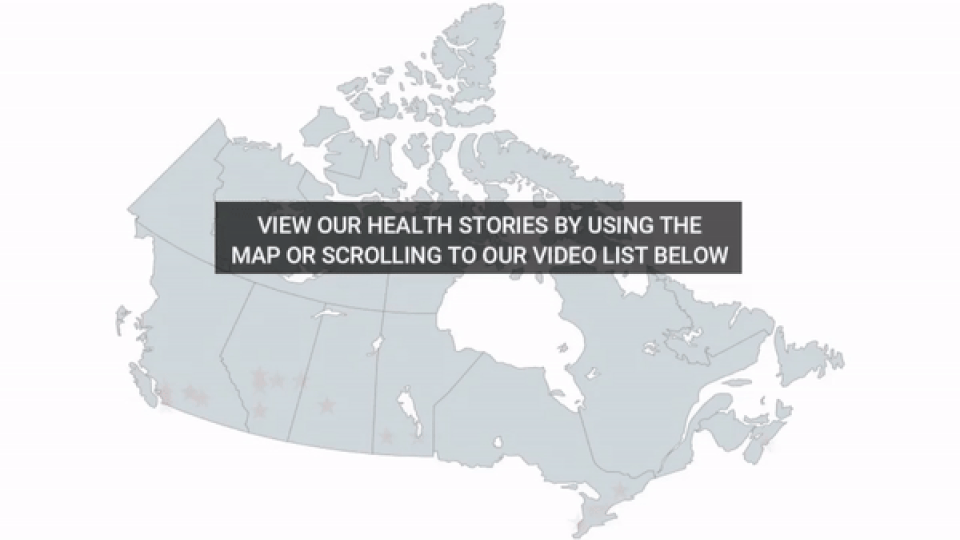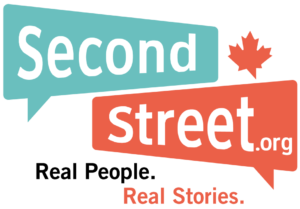Share this:
Health Reform
Canada is in desperate need of health reform.
Even before the pandemic arrived, our system was in a crisis state.
Below you will hear stories from everyday Canadians – a retired nurse who has lost two daughters due to long waiting lists, a retired senior who faced a painful wait for hip surgery and more.
Most importantly, this page also has informations on solutions.
Anyone can complain about a problem, but we’ve assembled information on solutions that can help patients.
Health Care Map

Jerry Agar's story (Toronto, ON)
Stefanos & George Michelis' story (Toronto, ON)
Patient Stories:
Ken Clifford discusses how a private clinic in Vancouver saved his shoulder from permanent damage (BC)
Kim Purdy discusses her painful 14-month wait for surgery in Alberta’s health care system (AB)
Chris Vander Doelen talks about his visit to an LA hospital that saved his life from prostate cancer (ON)
Jenny Mckenzie describes her long and painful wait for hip surgery (BC)
Max Johnson talks about his surgery in Lithuania and why he forwarded the bill to the Manitoba government! (MB)
Joan Hama describes how she almost died after being forced to wait too long for health care (BC)
Danny Hozack describes his positive experience with private care in Canada (AB)
Sharon Kilkenny talks about the 93 week waiting list she faces for hip surgery (SK)
Stefanos Michelis discusses his young son’s 3-year wait for surgery to fix a birth defect (ON)
Allison Ducluzeau discusses how she left the country to receive life-saving cancer care (BC)
Jeff Krushell shares his story of leaving Canada to get care for chronic back pain (AB)
Regan Johnson shares his story of being stuck on painkillers instead of receiving surgery in Canada (BC)
Steven Cedrone tells how he’s now confined in a wheelchair due to a long surgical wait (ON)
Judy Anderson describes losing two daughters due to long waiting lists (ON)
Jackie Herrera describes living in pain for years before finding relief in Germany (AB)
Bruce MacDonald describes his experience waiting for surgery in British Columbia’s health care system (BC)
Tracy Skinner describes going to Tijuana, Mexico for surgery to address her back pain (AB)
Jessica Bailey talks about the effects of the government cancelling her organ transplant surgery (SK)
Wendy Petersen discusses her long wait for knee surgery in Canada (MB)
John Massing faced a 2-year wait for back surgery – so he went to Germany instead (AB)
Nurse Christina Sanford describes having to travel to Mexico for treatment (NS)
Jerry Agar discusses his year-long wait for knee surgery, and how travelling for care could have helped (ON)
Leah Costello shares her story of jumping through hoops and waiting months for cancer care (BC)
Laurie McCoy tells how she was stopped from working as a nurse in Canada’s understaffed system (ON)
Melanie Leeson shares her story of travelling to receive care for an aggressive form of cancer (BC)
Other Interviews / Content:
Rick Baker discusses helping Canadians travel abroad for health care (BC)
We chat with Dr. Susan Piccinin about waiting lists, private health & an aging population
Ontario physician Dr. Shawn Whatley discusses his new book, “When politics comes before patients” (post-COVID)
What happens when the government health system runs a Tim Hortons? A lot of money is wasted
Angela Henry and Cheryl Cascio discuss crossing the Canada-U.S. border to work as nurses
Alberta premier Danielle Smith joins us to discuss health reform in her province
Retired nurse Janet Walker discusses her research into waiting list suffering (BC)
Ontario physician Dr. Shawn Whatley discusses Canada’s growing waiting list problem (pre-COVID)
Is Jim Carey right about health care in Canada? We took a closer look
How two Swedish hospitals illustrate a major way the Canadian health care system could improve
How a privately-run, publicly-funded clinic in BC has helped to slash surgical wait times
We debunk myths and misinformation from the federal health minister’s rant on health care
Solutions and Research:
Since launching in 2019, SecondStreet.org has released several policy briefs:
- Died on a Waiting List: These policy briefs examine government data on patients dying while waiting for care. SecondStreet.org has released three of these reports – December 2020, June 2021 and December 2021.
- The EU’s Cross Border Directive: Europeans have the right to travel to other EU countries, pay for health care and then be reimbursed by their home countries. We put together a short brief on this policy option and how it could help Canadian patients – click here.
- November 2021 Poll: This policy brief examines public opinion research into three health reform options that could help patients.
- Postponed Surgeries: This policy brief from March 2021 examines government data on postponed surgeries and diagnostic scans during the first year of the pandemic.
- Hospital Cafeteria Losses: This policy brief examines financial losses at government-run, commercial cafeterias in hospitals (including government-run, money-losing Tim Hortons franchises).
- COVID-19 Reinforces the Need for Health Reform: Prior to the pandemic, Canada’s health system was struggling. This policy brief compares Canada’s system with other nations and provides information on some better-performing health models.
- March 2020 Poll: This policy brief examines public opinion research on several aspects of health care in Canada.
- Private MRI Options: In late 2020, SecondStreet.org put out a policy brief that examines the growth in private MRI options in Canada.
- The Flight of the Sick: SecondStreet.org’s first policy brief examines just how many Canadians leave the country each year specifically for health care.
Several organizations in Canada have released important health care research and analysis. A few reports/links you might find of interest include:
- Chapter on Health Reform: Krystle Wittevrongel from the Montreal Economic Institute wrote an excellent chapter on health reform for a free eBook that we created with MEI and three other public policy groups. To view it – click here.
- Waiting Your Turn: For nearly 30 years, the Fraser Institute has been conducting important research on waiting lists in Canada. To view their 2021 report – click here.
- Activity Based Funding: One policy option that Canada could embrace is called Activity Based Funding. In short, this model incentivizes output by funding hospitals based on output – rather than annual cheques. To see the Fraser Institute’s report on this concept – click here, or click here to see the Montreal Economic Institute’s paper.
- Historic Look at Health Reform: The Macdonald-Laurier Institute has some interesting essays on health reform over the past 20 years, specifically, an examination of the Mazankowski report from 20 years ago.
- The Price of Public Health Care Insurance, 2022: The Fraser Institute broke down the costs of public health care for the average family. For example, the average family of four pays $15,847 a year for public health care.
You can help us continue to research and tell stories about this issue by making a donation
or sharing this content with your friends. Be sure to sign up for our updates too!


